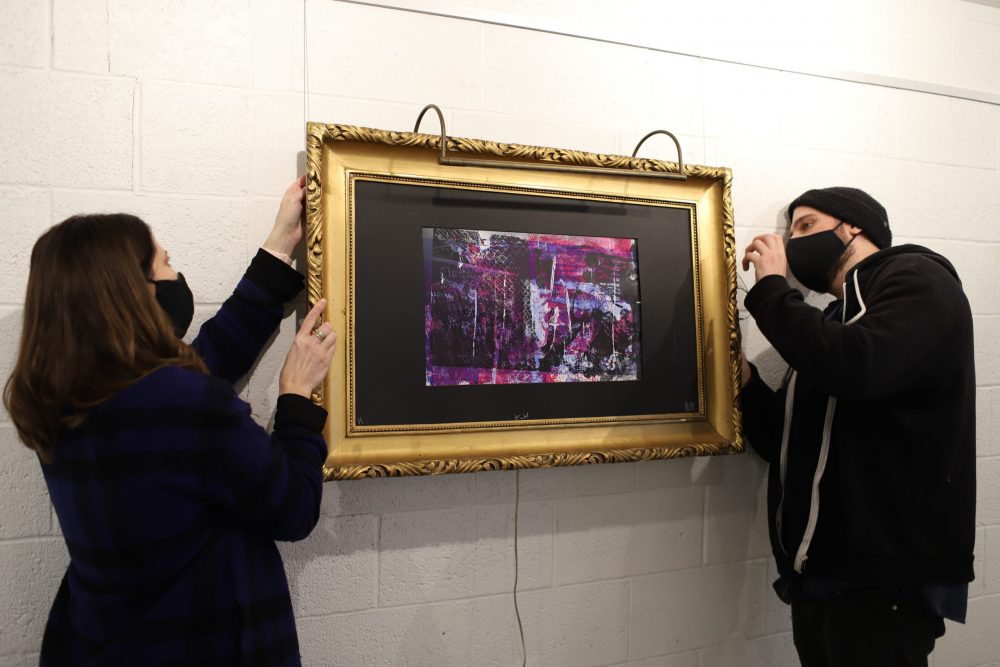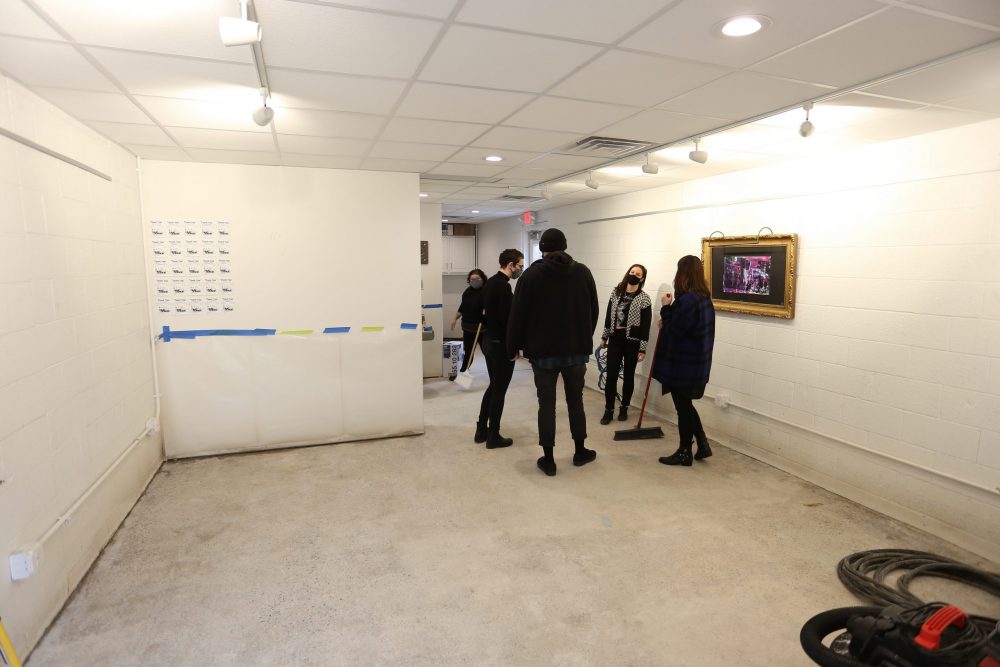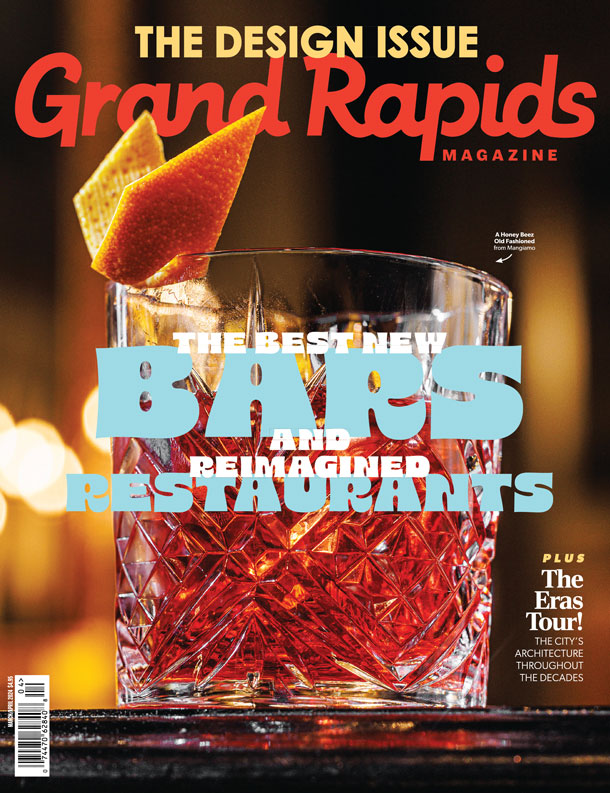After many years of closure, the Division Avenue Arts Collective will reopen at its new permanent location, 1553 Plainfield Ave. NE, in the funky Creston neighborhood.
For nearly 10 years since 2003, the volunteer-run institution served as a substance-free, all-ages venue for music, visual art, exhibitions and community meetings without the pressure to make a profit.
“We try to represent folks who don’t have an opportunity to get out there because they’re just starting out or aren’t established yet,” said Sal Moreno, core committee member of the Division Avenue Arts Collective (DAAC). “If you’re a musician, it’s a venue for your performance. If you’re an artist, it’s a space for your gallery. If you’re hosting a meeting or a gathering and need access to tables, chairs and snacks, it’s available to you at a low cost.”
Its goal was to provide truly accessible space for local, independent and up-and-coming creatives to experiment with artistic expression regardless of their age or circumstance.
“Grand Rapids has so many art schools and colleges around. The DAAC gives folks the opportunity to have their first exhibitions without having to get into a more traditional gallery space,” said Alison Christensen, another DAAC core committee member.
“We still talk about the shows we had at the DAAC back in 2007. Having those experiences for the first time as a young adult really sticks with you and we want others to have those experiences too. It’s important for younger artists to have a space where they feel respected for their ideas and feel empowered to put a show together and learn without worrying that they’ll be judged. Everyone is here to help you.”
The DAAC’s influence on Grand Rapids’ creative scene is so central that many of the collective’s core committee members were once also young artists that used the space.
“I played my first show with my band at the DAAC,” said Charity Lytle, DAAC core committee member. “It was cool that we didn’t have to bring our own P.A. system or worry about mics and lighting. The DAAC provides that for you, as well as the volunteers that run the equipment.”
A dual revivalThe DAAC’s new 4,927-square-foot building will be shared and co-owned by Gaia Cafe, a vegetarian restaurant that served the East Hills neighborhood from 1982 to 2014, when the previous owner retired and closed shop. Longtime employee/manager Andrea Bumstead bought the branding and recipes from former owner Rick Van Dam and plans to carry on its legacy. Gaia Cafe will operate in the front portion of the building while the DAAC will use the rear portion. In addition to partnering on the purchase of the building, the DAAC and Gaia Cafe have plans to collaborate on programming once the two are fully operational. “It’s a great partnership and it’s amazing that people supported both the DAAC and Gaia Cafe after so many years. It’s the perfect comeback story!” said Charity Lytle. “We plan to operate at different times throughout the day, but we also have the opportunity to do building-wide events. We’re still brainstorming what that looks like, but we’re excited about the potential.” |
Much to the creative community’s dismay, the DAAC was displaced from its Division Avenue location in 2013 due to new building ownership. It reopened temporarily in 2016 at 333 Rumsey St. SW. Since then, the group searched for a permanent location that would fit its needs.
Finally, after an outpouring of community support, a few partnerships and a lot of hard work, the DAAC found its new home on Plainfield Avenue in early 2019.
“As an artist, the DAAC was one of the first spaces where I was able to display my work, make sales and understand the work that goes into setting up a show,” said Christensen. “Our volunteers, who are also creatives, are there to help the artists that use the space. It’s a conversation from the beginning of your booking until the installation. I’m excited to have a space like that available to the public again.”
A rich history and a bright future
Though the previous locations of the DAAC were well-loved and gave members of the creative community a space to freely express themselves, the organization did not have the ability to make long-term changes and improvements to its brick-and-mortar space … until now.
“Our new space is bigger and better than the original DAAC,” said Christensen. “In terms of art shows, they will be easier and safer to install. There’s a whole music area that will always be ready to go and can easily be transformed into a space for programming where people can work.”
The DAAC’s core committee is eager to continue designing the space to cater to its specific needs. This freedom allows for programming that was not possible at the old location, such as afterschool activities for kids, meeting and practice space for the community, and even parties or potlucks.
With construction coming to a close, the new DAAC is closer to reality.
“We’re excited to be part of the Creston neighborhood. It has all the things we were looking for. It’s a thriving area of town, there’s public transportation, great restaurants and businesses,” said Lytle. “We’re also looking forward to contributing to the neighborhood and helping give business to other folks.”
The group began renovating the new space in December of 2019. It was weeks from opening in March 2020, but those plans dissipated due to the COVID-19 pandemic.
“It’s a scary and unknown place and I think a lot of venues are experiencing this now. We’ll have to rethink how to use the space while we can’t do big art and music shows,” said Lytle. “Thankfully, we have a nest egg from a fundraiser we did in 2014. The huge outpour of community support will help us through the next months and we’re very thankful for that.”
At the time of writing this article, renovations were wrapping up, with plans to open in early 2021.
For more information, to volunteer or to find out how you can support the DAAC, visit thedaac.org or email info@thedaac.org.
This story can be found in the February 2021 issue of Grand Rapids Magazine. To get more stories like this delivered to your mailbox each month, subscribe here.











Facebook Comments